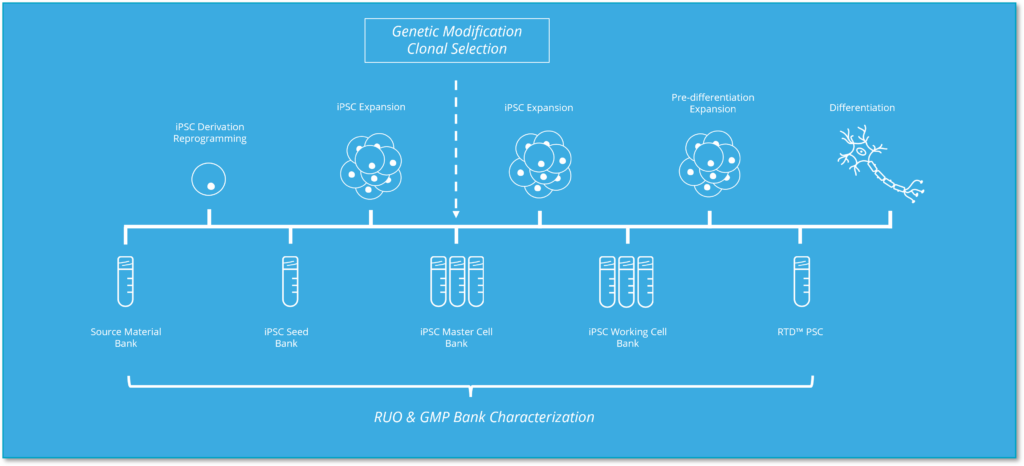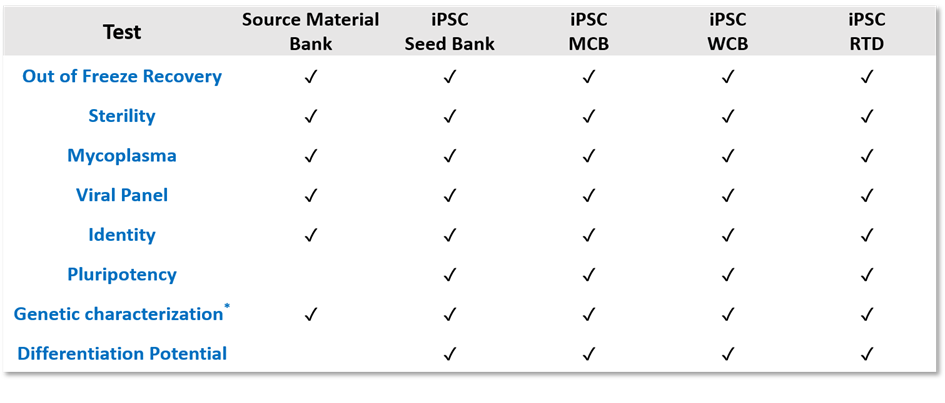Dr. Raluca MARCU, Director of Research at Pluristyx, took part in the final validation of Stem Genomics’ latest NGS-based assay before its commercial launch. In our November webinar, she explained why she finds the Stem-Seq™ Plus test relevant in the context of an hPSC production, and how it can be integrated as part of a product workflow.
As you can see from the chart below, many of Pluristyx’s pluripotent stem cell products are generated in the form of RUO and GMP banks. All these banks require extensive characterization. This is a typical workflow for hPSC generation at Pluristyx:

Each bank undergoes extensive characterization

Dr. Raluca MARCU explains that the high resolution of the Stem-Seq™ Plus test is a good complement to the G-Banding analysis. Traditional karyotyping is great at detecting most large numerical and structural aberrations, but will not detect small copy number variants or SNVs, commonly associated with iPSC and cancer-related genes (TP53). The targeted analysis provided by Stem-Seq™ Plus focuses on the abnormalities with potential deleterious effects that could impact the quality of Pluristyx’s cell banks.
It is therefore pertinent to use it at multiple stages during product development and bank generation. This is how Pluristyx sees this assay’s integration:
- During source material banking: for genetic profile and early screening
- At iPSC seed bank stage: to detect potential genetic changes due to iPS derivations
- At iPSC MCB, WCB, RTD stages: to detect genetic changes due to cell expansion
Last but not least, what Pluristyx loves the most about this assay is the streamlined data interpretation. It provides clear criteria for classification and data interpretation by only looking at variants with biological impact (class 4 and 3) and variants present at high frequency.
Dr. Raluca MARCU concludes: “All in all, I would say that testing the Stem-Seq™ Plus was a great experience. It gave valuable information for the characterization of our cells and can easily be incorporated in testing routine material”.

